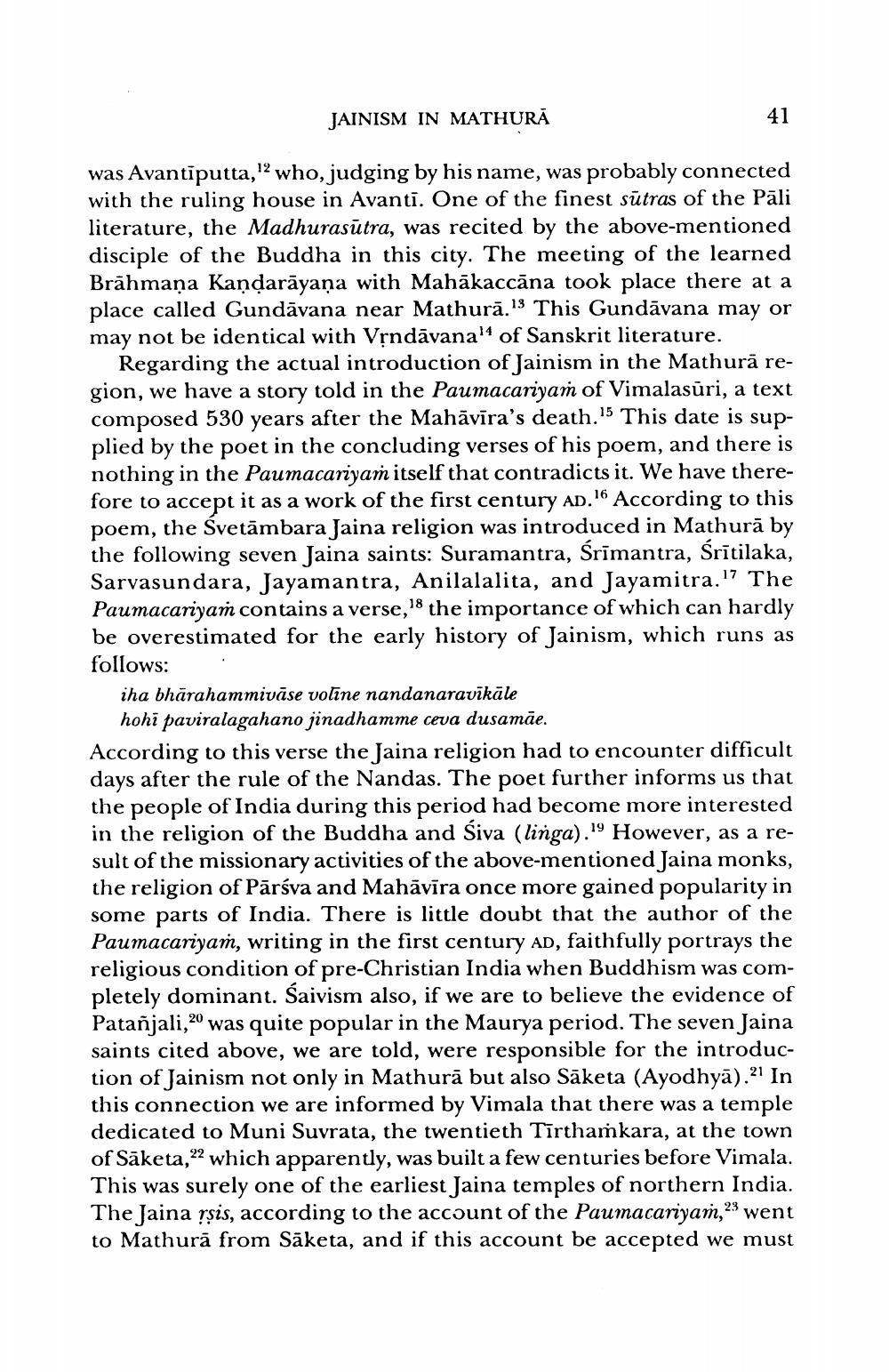________________
JAINISM IN MATHURĂ
41
was Avantiputta,12 who, judging by his name, was probably connected with the ruling house in Avanti. One of the finest sūtras of the Pāli literature, the Madhurasūtra, was recited by the above-mentioned disciple of the Buddha in this city. The meeting of the learned Brāhmana Kandarāyana with Mahākaccāna took place there at a place called Gundāvana near Mathurā.13 This Gundāvana may or may not be identical with Vrndāvanal of Sanskrit literature.
Regarding the actual introduction of Jainism in the Mathurā region, we have a story told in the Paumacariyam of Vimalasūri, a text composed 530 years after the Mahāvīra's death.15 This date is supplied by the poet in the concluding verses of his poem, and there is nothing in the Paumacariyam itself that contradicts it. We have therefore to accept it as a work of the first century AD. According to this poem, the Svetāmbara Jaina religion was introduced in Mathurā by the following seven Jaina saints: Suramantra, śrīmantra, Śrītilaka, Sarvasundara, Jayamantra, Anilalalita, and Jayamitra."? The Paumacariyaṁ contains a verse, 18 the importance of which can hardly be overestimated for the early history of Jainism, which runs as follows:
iha bhārahammivāse voline nandanaravīkāle
hohi paviralagahano jinadhamme ceva dusamāe. According to this verse the Jaina religion had to encounter difficult days after the rule of the Nandas. The poet further informs us that the people of India during this period had become more interested in the religion of the Buddha and Siva (linga).'9 However, as a result of the missionary activities of the above-mentioned Jaina monks, the religion of Pārśva and Mahāvīra once more gained popularity in some parts of India. There is little doubt that the author of the Paumacariyam, writing in the first century AD, faithfully portrays the religious condition of pre-Christian India when Buddhism was completely dominant. Saivism also, if we are to believe the evidence of Patañjali,20 was quite popular in the Maurya period. The seven Jaina saints cited above, we are told, were responsible for the introduction of Jainism not only in Mathurā but also Säketa (Ayodhyā).21 In this connection we are informed by Vimala that there was a temple dedicated to Muni Suvrata, the twentieth Tīrthamkara, at the town of Säketa,22 which apparently, was built a few centuries before Vimala. This was surely one of the earliest Jaina temples of northern India. The Jaina rsis, according to the account of the Paumacariyam,23 went to Mathura from Säketa, and if this account be accepted we must




